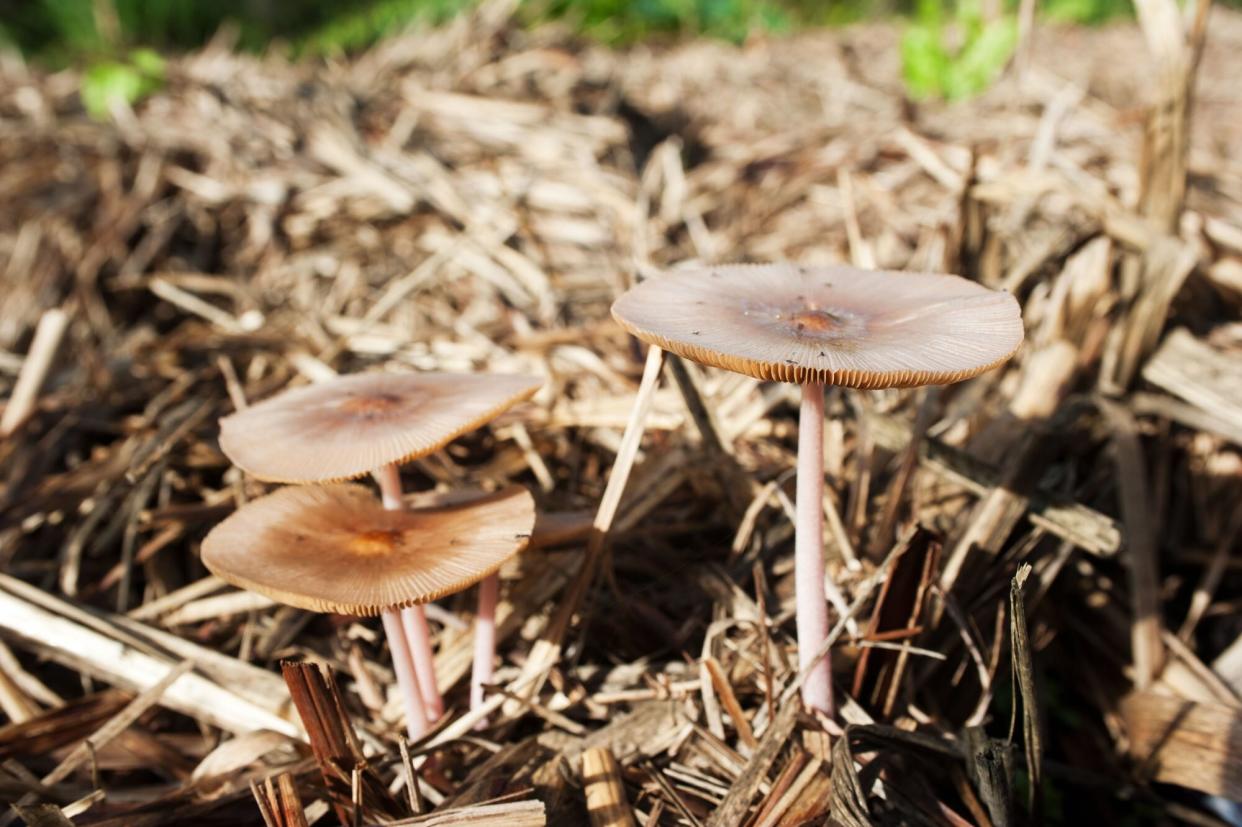How to Spot Fungus in Your Mulch—Plus, the Best Ways to Get Rid of It

Birkholz / Getty Images
Mulch is a valuable asset to your garden. It helps retain moisture in soil, prevents weeds from sprouting, and keeps pests at bay. However, mulch also provides the ideal environment for fungus growth. Although it's not usually harmful to your plants, fungus mulch may be a concern from a cosmetic standpoint, explains Chelsi Abbott, technical advisor at Davey Tree. "Fungus is a wood decayer and is very important to the recycling of nutrients," she says. Beyond wanting to remove mildew for aesthetics, certain varieties, such as artillery fungus, can decay wood and spread from mulch to other areas of your property, like a car or home exterior.
Whether you want to get rid of fungus mulch to keep your garden looking nice or because you've spotted areas of mold, these expert tips will teach you how to deal with the landscape inconvenience effectively and efficiently.
Related: How to Choose the Right Mulch for Your Garden
How Fungus Forms
"Fungus happens in damp conditions," says Juliet Del Rio, community outreach and marketing manager at Bob's Garden Center. In the average yard, you'll likely find fungus growing if you have a hose drip near a shady area or during an exceptionally rainy season in patches where there's a lot of tree coverage. "In our shore town garden center, we see fungus in mulch a lot because it's a generally humid environment," she explains. According to Del Rio, anytime a living organism decomposes, the bacteria will attract fungus, which is why you should remove dead plant matter from your garden before mildew sets in. Additionally, Abbot says that wood and leaf mulch have an abundance of nutrients that are unusable to the plants, causing fungi and bacteria—their jobs are to break down those unnecessary supplements—to form. "The fungi you may find on mulch might just be doing their job!" she adds.
How to Spot Fungus in Mulch
Fungus can take many forms. While white to brown small-capped mushrooms are the most common tell, it can also appear as a carpet covering the surface of an area. Del Rio says it depends on the conditions of where you live—dampness, coolness, and soil type are all factors that impact mold growth. "Generally, you will see artillery fungus, various mushrooms, slime mold, birds nest fungus, and others," she says. "There's millions of types of fungus out there!" If you need help identifying the type of mold growing in your mulch, Del Rio recommends contacting a local nature center, agriculture department, or garden center for help.
How to Remove Fungus from Mulch
Abbott's favorite method for removing fungus from mulch is to physically take out the fruiting bodies (the visible parts of fungi on the top of the mulch) as they appear. She says this technique is preferred because it allows the vegetable fungal structures—white thread-like material—to still breakdown the nutrients for your plants and continue to benefit them. If you're dealing with small spots, like mushrooms, Del Rio says you can dig them up and dispose of them. However, if you're dealing with something persistent, like artillery fungus, she says you will need to remove the mulch and spray a fungicide on the area—as well as other surfaces affected—before adding a fresh layer of mulch. "If you do need to remove the mulch, do not compost it as the spores can come back to seek revenge," she notes. "Some spores are wind-borne, so bag the mulch on a day with low wind. Definitely identify the fungus and read up on the best ways to deal with it. Each will require its own method of action."
Raise the Soil's pH
One way to limit fungus growth is to raise the soil's pH. "Fungi like more acidic soil, so typically anything over seven should start to have a negative effect on the health of the fungi," explains Abbot. "Keep in mind that the plant might also grow well in a specific pH—any changes to the soil to affect fungi will also directly and indirectly affect the plants." When taking this route, Del Rio recommends using lime to de-acidify the earth. "Most garden centers sell an at-home soil test kit that you can use to see what level your garden beds are currently at and about how much lime you need to use to get them where you want to be," she says.
Leave the Fungus Alone
"While fungi may be unsightly on the top of the soil, it has an important role to play in the overall health of the garden and it is better to leave it alone if you can," Abbott says. Fungus is essential when it comes to decaying dead organic matter, so it ultimately benefits the plant by releasing nutrients slowly back into the soil that would be otherwise unavailable. "Fungi are very good at wood decay and since most mulch has a high wood content, this is the best way to have it be broken down and recycled," she adds. If you don't like the way it makes your plants look, Abbot says to just remove the mushrooms, preferably when it isn't raining so you can reduce the risk of spreading spores.

